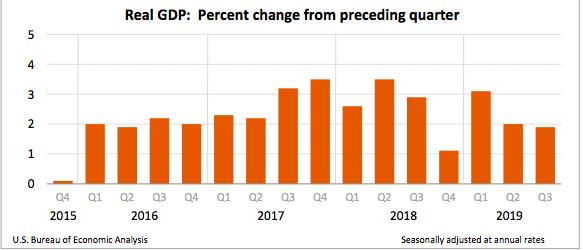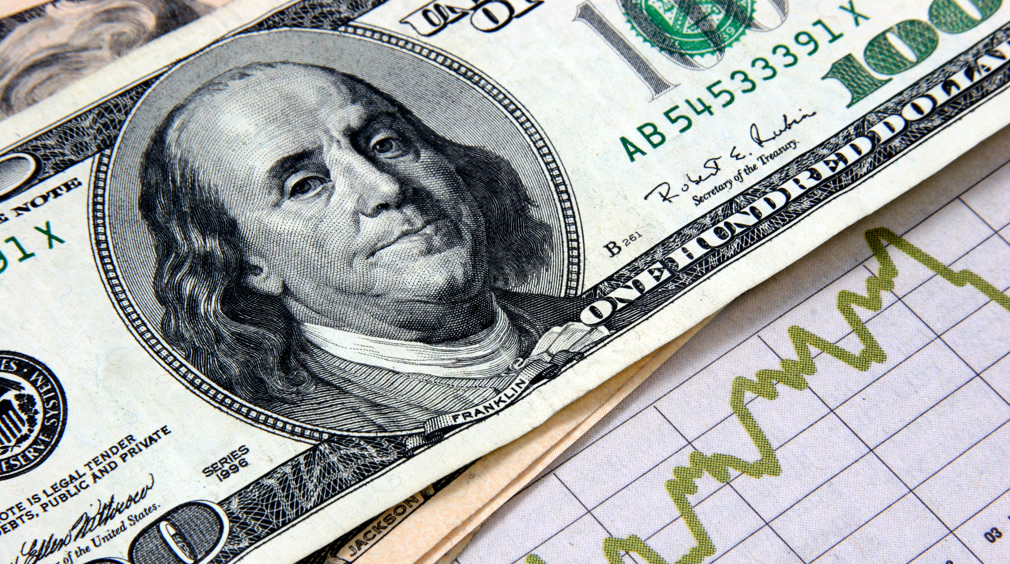Inflation-adjusted GDP increased at an annual rate of 1.9% in the third quarter, the lowest reading since the end of 2018, according to the advance estimate from the Bureau of Economic Analysis. In the second quarter of the year, GDP grew at a 2% pace.
Today’s Q3 GDP estimate is based on incomplete source data that is subject to further revision and will be followed by a second estimate, due to be released in November.
Homebuilding made a positive contribution to GDP growth for the first time in six quarters, accounting for 0.18% of the gain. Personal consumption expenditures, meaning household spending, also contributed but at a weaker pace. Its contribution fell to 1.9% from 3%.
The GDP increase also reflected positive contributions from federal government spending, state and local government spending, and exports, which were partly offset by negative contributions from nonresidential fixed investment and private inventory investment.
Current-dollar GDP increased 3.5%, or $185.6 billion, in Q3 to a level of $21.53 trillion. This is down from the second quarter’s 4.7%, or $241.4 billion.
The gross domestic price purchase index increased 1.4% in Q3, down from an increase of 2.2% in Q2. Lastly, personal consumption expenditures increased 1.5%, down from 2.4% last quarter.
Here are updates to the previous estimate:
Real GDP: Increased to 1.9%, down from last estimate’s 2%
Current-dollar GDP: Increased to 3.5%, down from last estimate’s 4.7%
Gross domestic purchases price index: Increased to 1.4%, down from last estimate’s 2.2%
Personal consumption expenditures: Increased to 1.5%, down from last estimate’s 2.4%
The chart below shows that GDP fell one percentage point from the first quarter and sits nearly one percentage points below Q3 of 2018.







